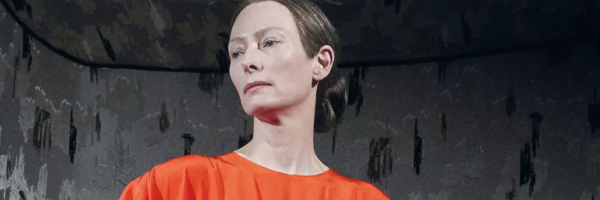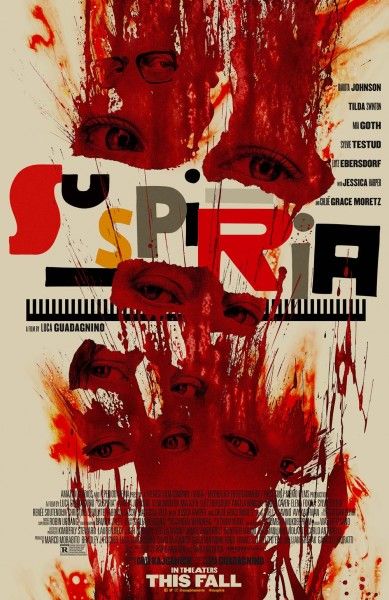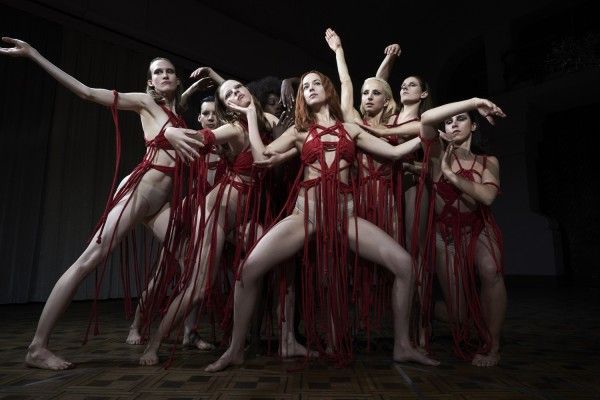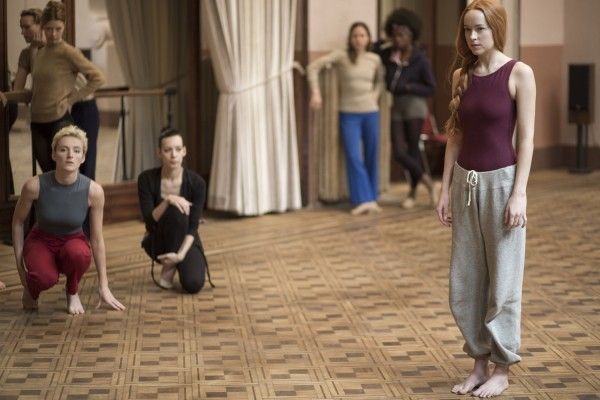[With Suspiria now available on Amazon Prime, we’re reposting our explainer for the new round of viewers.]
Suspiria is a movie that loves to live in the abstract. It’s layered with subtext and themes that should have you and your friends talking afterwards about Luca Guadagnino’s remake of the 1977 horror classic. But there are times when the plot can be so abstract that it’s a bit hard to get on the same page. That’s particularly true of the film’s bloody climax where some surprising reveals are brought into play to hammer home the film’s themes about power, perversion of power, motherhood, and sisterhood.
To begin, it’s important to understand the overall mythology of Suspiria. We’re told that there are three “mothers”, elder gods of great power who existed before time and the universe. They are Mother Suspiriorum, Mother Tenebrarum, and Mother Lachrymarum. Go down a level from there, and you have the coven of witches running the dance academy in 1977 Berlin. These witches recently held a vote for who would lead the coven, and they voted in favor of Madame Markos over Madame Blanc (both played by Tilda Swinton). The purpose of the coven is to prime one of the young female dancers in the troupe for a ceremony which will imbue Markos with great power and a new body.
They originally settled on Patricia (Chloe Grace Moretz), who has been driven mad by the preceding ceremonies and tries to confide in therapist Dr. Jozef Klemperer (Swinton again, this time under the pseudonym “Lutz Ebersdorf”), a Holocaust survivor. Klemperer believes that these are delusions subbing in for a dangerous political group, so he sends the police to investigate (the two officers are bewitched when they visit the academy and claim they found nothing out of the ordinary). The coven then settles on new arrival Susie Bannion (Dakota Johnson), a preternaturally gifted young woman who grew up in a strict Mennonite background with an abusive mother. Blanc, reluctantly, starts to groom Susie for the ceremony, which means plaguing her with nightmares and stretching her ability to dance.
When the night of the ceremony finally arrives, we see that the coven is in control, and most of the young dancers are bewitched, performing in the ceremony. The only outliers are those like Patricia and Olga (Elena Fokina), who are now decaying but still somehow alive, as well as Susie’s friend Sara (Mia Goth), who discovered the plot, but was captured by the witches and is disemboweled but kept alive as part of the ceremony. When Susie arrives and sees Blanc and the grotesque Markos, there’s a couple of twists.
The first twist is that Blanc cannot go through with the ceremony, or at least she wants to give Susie an out. It’s clear that Blanc and Markos do not share the same values, and Blanc has now formed a kinship of sorts with Susie. While the coven pretends to be motherly towards the students, they’re actually just using them for their power and the upcoming ceremony. Blanc was on this path as well, but then starts to feel maternal towards Susie. When Blanc tries to reassure Susie that the only way to go through with the ceremony is without any doubts, Markos grows angry and almost completely decapitates Blanc.
Then we get to the second twist where Susie reveals that she is the manifestation of Mother Suspiriorum, one of the elder gods. Whether Susie has always been Mother Suspiriorum or was recently taken over by Mother Suspiriorum is unclear, and I would accept arguments both ways. Personally, I feel that she’s let herself become taken over by Mother Suspiriorum who has arrived to mete out justice to those who have perverted her ways in a quest for power. She then proceeds to destroy Markos and every member of the coven who voted for Markos.
Why does Suspiriorum do this? My read on the ending is that Markos and those who support her have abused their power. Guadagnino is repeatedly hitting on a world where power has been abused, and those who feel no guilt or shame are running rampant. We see it in Klemperer’s history as a Holocaust survivor; we see it in the current events that pop up in the news during the movie; and we see it inside the coven where the older women who are supposed to be teaching and helping the students are instead preying on them. The movie isn’t saying that powerful women are bad; it’s saying that anyone who abuses their power to their own ends rather than serving others is perverting that power.
Thus, Mother Suspiriorum is an avenging power that summons “Death” (as the character is credited) to come up from beneath the depths of the academy and lay waste to Markos and everyone who supported her. To also show that Suspiriorum is not simply one who wreaks havoc, we also see that she goes to the suffering Patricia, Olga, and Sara and gives them the sweet release of a gentle death rather than obliterating them.
The epilogue, where Susie comes to visit Klemperer reiterates the overall theme by telling him his late wife’s final moments in the death camp, emphasizes that women bonding together have the power to remove the fear of death, and that while the world—especially the powerful—need “guilt” and “shame”, Klemperer should not feel those things because he has not abused his power. He’s the “witness” and from the perspective of witnessing a fascist rise to power—in his case, Nazi Germany—he is responsible for watching and doing nothing. However, it’s people in power who need guilt and shame in order to stop them from abusing their power.
Of course, only talking about the ending just scratches the surface of Guadagnino’s movie, which delves into themes about art, feminism, gender, fascism, and history to name a few. It’s a rich movie that separates itself from Dario Argento’s original while offering plenty to discuss if you give yourself over to the dance.






